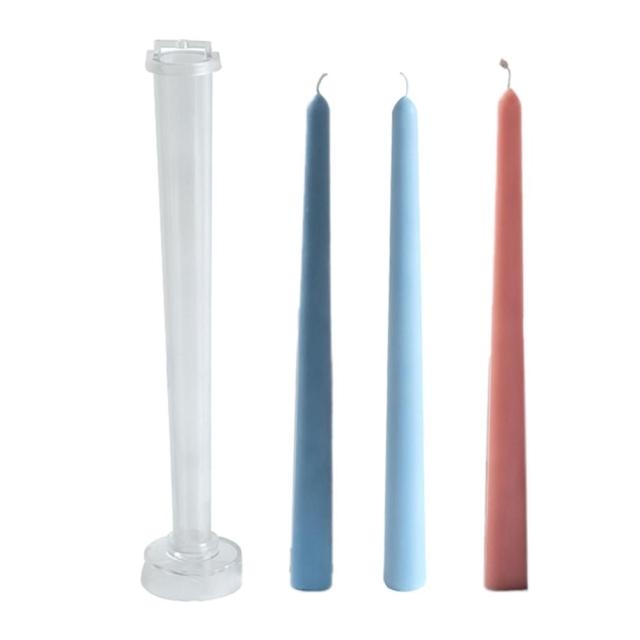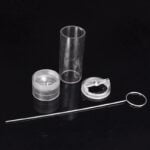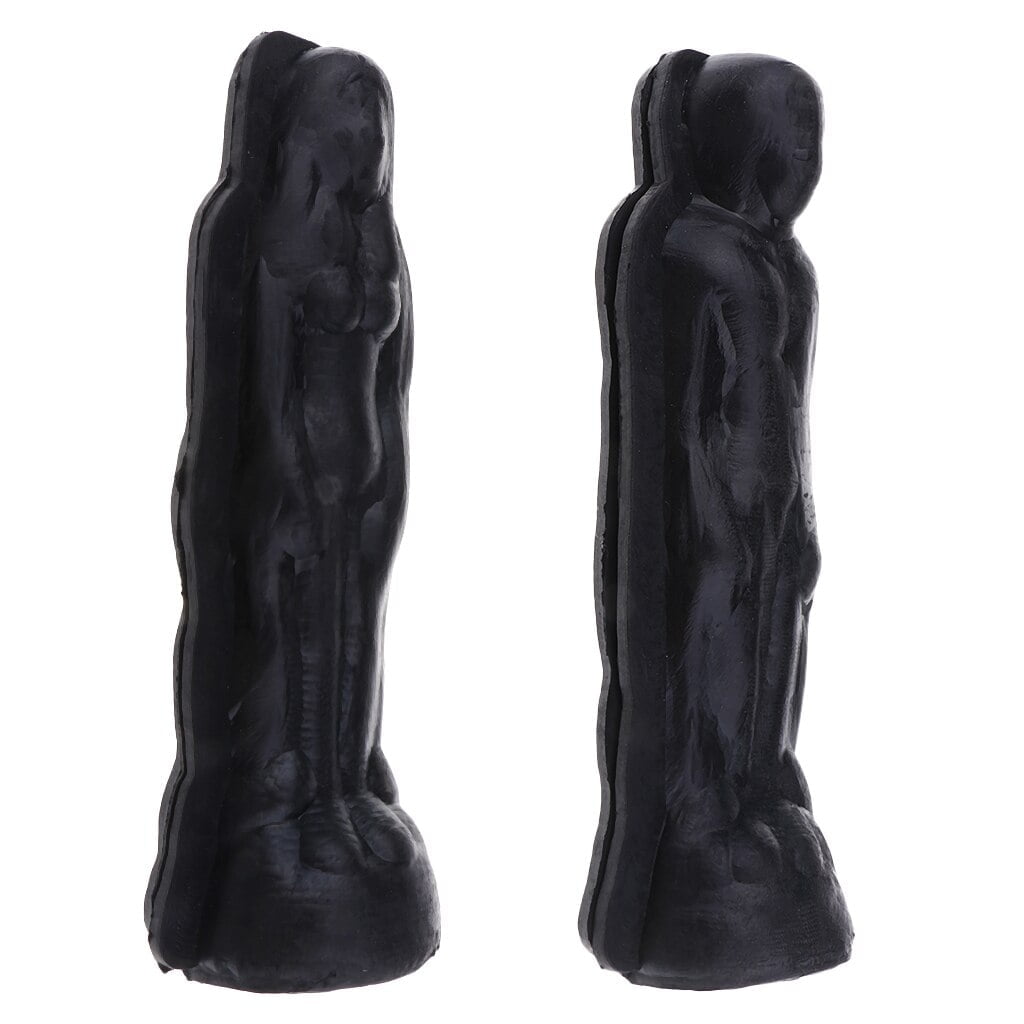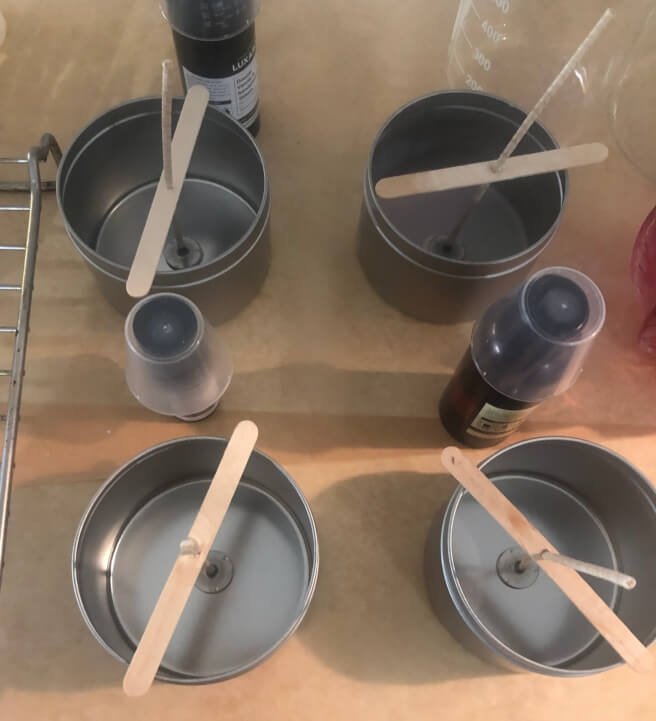Candle making has been a beloved craft for centuries, with its own unique set of challenges and rewards. One such challenge is the occurrence of popping sounds during the candle making process. Understanding the meaning behind these popping sounds is crucial for creating high-quality candles that are free from defects. In this article, we will delve deep into the fascinating world of candle making and explore the science behind the popping sound.
One of the key factors in understanding the popping sound in candle making is the temperature of the wax. The significance of wax temperature and its relation to the popping sound will be thoroughly examined, shedding light on how different temperatures can affect the final outcome of a candle.
Furthermore, we will also explore the role of fragrance oils in candle making and their impact on the popping sound. Many candle makers have experienced variations in popping sounds when using different fragrance oils, and we aim to uncover the reasons behind this phenomenon.
Additionally, we will debunk common misconceptions about candle making popping sounds and provide valuable insights into troubleshooting and minimizing these sounds. By addressing these misconceptions head-on, we hope to equip our readers with practical knowledge that can elevate their candle making skills to new heights. Stay tuned as we embark on a captivating journey into the art and science of interpreting different popping sounds in candle making, along with expert tips for achieving that perfect pop.
The Significance of Wax Temperature in Candle Making and Its Relation to the Popping Sound
When it comes to candle making, the popping sound can be an important indicator of the quality of the candle. One of the key factors that contribute to this popping sound is the temperature of the wax during the pouring process. The temperature at which the wax is poured plays a significant role in determining whether or not popping sounds will occur.
Typically, when wax is poured at too high of a temperature, it can create air pockets within the candle as it cools and solidifies. These air pockets are what cause the popping sound when the candle is burning. On the other hand, if the wax is poured at too low of a temperature, it may not adhere properly to the container and result in candles that do not burn evenly.
To achieve the perfect pouring temperature, it’s essential to invest in a good quality thermometer specifically designed for candle making. Different types of waxes have different ideal pouring temperatures, so it’s crucial to follow specific guidelines depending on the type of wax being used. For example, soy wax typically has an ideal pouring temperature range between 120°F and 160°F, while paraffin wax may have a slightly higher range between 150°F and 180°F.
It’s important for candle makers to closely monitor and control their wax temperatures throughout the entire candle making process in order to minimize popping sounds and ensure high-quality candles. By understanding and paying attention to these temperature guidelines, candle makers can troubleshoot and minimize any unwanted popping sounds in their creations.
| Temperature Range | Wax Type |
|---|---|
| 120°F – 160°F | Soy Wax |
| 150°F – 180°F | Paraffin Wax |
Understanding the Role of Fragrance Oils and Their Impact on the Candle Making Popping Sound
Fragrance oils play a crucial role in the candle making process, not only for imparting pleasant scents but also for their impact on the popping sound that occurs during the cooling process. The type and amount of fragrance oil used can significantly affect the quality of a candle and its popping sound. Here are some key points to consider when using fragrance oils in candle making:
- Quality of Fragrance Oils: Using high-quality fragrance oils can result in a cleaner and more consistent burning candle, which may help minimize popping sounds.
- Quantity of Fragrance Oils: Overly saturating the wax with fragrance oil can lead to excessive air bubbles forming during the cooling process, potentially causing more pronounced popping sounds.
It’s important to note that different types of fragrance oils can behave differently when added to melted wax. For instance, essential oils may have a different impact on the popping sound compared to synthetic fragrance oils. Additionally, certain fragrances with higher levels of alcohol content or volatile compounds may contribute to more pronounced popping sounds as they evaporate during the cooling phase.
Ultimately, understanding how different fragrance oils interact with wax and their influence on the popping sound is essential for candle makers looking to achieve a desired auditory experience along with captivating scents. By carefully selecting and proportioning fragrance oils, artisans can enhance not only the olfactory appeal but also the overall sensory experience of their handcrafted candles.
Common Misconceptions About Candle Making Popping Sounds Debunked
One common misconception about popping sounds in candle making is that they are a sign of a defective or low-quality candle. In reality, popping sounds are a natural occurrence in the process of creating candles, especially those made with soy or beeswax.
These sounds occur due to the release of air bubbles trapped within the wax as it cools and solidifies. It’s important for candle makers to understand that these popping sounds are not indicative of any issues with the quality of their candles.
Another misconception is that the presence of popping sounds means that the candle will not burn properly. While it’s true that excessive air pockets or voids can affect the way a candle burns, not all popping sounds result in this outcome. The key is to differentiate between normal, harmless popping sounds and those caused by significant air pockets within the wax. This requires careful observation during the cooling process and proper techniques to minimize these air pockets.
It’s also worth noting that some people mistakenly believe that using fragrance oils in candle making causes more pronounced popping sounds. While it’s true that certain types of fragrance oils can influence how wax behaves during cooling, there isn’t a direct correlation between using fragrance oils and an increase in popping sounds. In fact, many experienced candle makers have successfully incorporated fragrance oils into their process without experiencing excessive popping noises.
- Some expert tips for achieving the perfect popping sound
- Common troubleshooting techniques to minimize unwanted popping sounds
- How historical and cultural influences impact perceptions of popping sounds in different regions
How to Troubleshoot and Minimize Popping Sounds in Candle Making
When it comes to candle making, the popping sound can either be a sign of success or a cause for concern. While some may see it as a satisfying indication that their candles are cooling and setting properly, others may worry that it signifies a potential issue with the finished product. To troubleshoot and minimize popping sounds in candle making, there are various factors to consider.
Understanding the Impact of Wax Temperature
One of the primary culprits behind popping sounds in candle making is the temperature of the wax. When wax cools too quickly, it can create air pockets within the candle, leading to popping sounds as these pockets release air.
To minimize this issue, it’s crucial to ensure that the wax is allowed to cool at a consistent and gradual rate. This can be achieved by controlling the environment where the candles are set to cool, such as placing them in a room with stable temperature and minimal drafts.
Importance of Pouring Techniques
Another factor that can contribute to popping sounds in candle making is the pouring technique used. If the wax is poured too quickly or from too great a height, this can create agitation and air bubbles within the liquid wax. To troubleshoot this issue, take care to pour the wax gently and steadily into the containers, minimizing splashing and turbulence during the process.
Choice of Fragrance Oils
The type and amount of fragrance oils used in candle making can also impact popping sounds. Certain fragrances contain ingredients that may react with the wax, causing increased popping noises during cooling. By carefully selecting fragrance oils specifically designed for candle making and following recommended usage rates, you can minimize this potential cause of popping sounds. Additionally, experimenting with different fragrance oil combinations may help pinpoint any specific scents that contribute to excess popping.
By taking these factors into consideration and implementing appropriate troubleshooting techniques, candle makers can effectively minimize unwanted popping sounds in their creations.
Exploring the Historical and Cultural Significance of the Popping Sound in Candle Making
The popping sound in candle making is not only a scientific phenomenon but also holds historical and cultural significance. Throughout history, candles have been used for various purposes, including lighting, religious ceremonies, and rituals. The popping sound that occurs during the cooling process of the candle has been associated with different beliefs and superstitions in various cultures.
In many ancient civilizations, the popping sound during candle making was believed to be a sign of good luck or a positive omen. It was often seen as an indication that the candle would bring light and protection to the home. Some cultures even considered the popping sound to be a connection to the spiritual realm, believing that it represented communication from ancestors or deities.
In modern times, the popping sound in candle making has also become symbolic of tradition and nostalgia. Many people associate the sound with feelings of warmth and comfort, as it reminds them of traditional handmade candles and the care that goes into crafting them. This cultural significance has made the popping sound an essential element of the overall candle-making experience, adding depth and meaning to the craft.
Anecdotal evidence suggests that some candle makers believe that different types of popping sounds may have specific meanings or implications for the success of their candles. While there is limited scientific evidence to support these claims, many artisans still adhere to these beliefs as part of their cultural heritage and personal connection to their craft.
| Significance | Explanation |
|---|---|
| Good Luck | The popping sound was considered a sign of good luck or a positive omen in many ancient civilizations. |
| Nostalgia | In modern times, people associate the popping sound with feelings of warmth and comfort, reminding them of traditional handmade candles. |
| Cultural Heritage | Some candle makers adhere to beliefs about different types of popping sounds having specific meanings based on their cultural heritage and personal connection to their craft. |
The Art of Interpreting Different Popping Sounds in Candle Making
The sound of popping in candle making is not just a random occurrence, but it can actually provide valuable insights into the quality of the candle being produced. Different popping sounds can indicate various factors that affect the candle’s overall performance and aesthetic appeal. By learning how to interpret these sounds, candle makers can gain a deeper understanding of their craft and improve the quality of their products.
Interpreting the Popping Sounds
Each popping sound during the candle making process can hold valuable information about what is happening within the candle. For example, a rapid succession of small pops may indicate that there is excess moisture or air trapped within the wax. On the other hand, a deep, slow pop could suggest that the wax has cooled too quickly, resulting in uneven cooling and potential cracking in the finished product.
Adjusting Techniques for Desired Results
By learning to interpret these different popping sounds, candle makers can adjust their techniques to achieve their desired results. For instance, if the popping sounds indicate uneven cooling, they may need to adjust their pouring temperature or insulation methods. Understanding these nuances can help artisans create high-quality candles with a smooth surface and minimal imperfections.
Enhancing Craftsmanship Through Sound Interpretation
Incorporating an understanding of popping sounds into the candle making process adds another dimension of craftsmanship to this ancient art form. By using this knowledge, artisans can fine-tune their techniques to create candles that not only look beautiful but also burn evenly and emit fragrances effectively. The ability to interpret popping sounds adds an element of skill and intuition to candle making that sets apart master artisans from amateurs.
Expert Tips and Techniques for Achieving the Perfect Popping Sound in Candle Making
In conclusion, the popping sound in candle making is not just a random occurrence, but rather a fascinating aspect of the craft that has deeper scientific and cultural significance. The wax temperature plays a crucial role in the formation of these popping sounds, and understanding its impact can help candle makers achieve the desired results. Additionally, the use of fragrance oils can also influence the popping sounds, adding another layer of complexity to the art of candle making.
It is important to debunk common misconceptions about candle making popping sounds, as it can help aspiring candle makers troubleshoot and minimize these sounds effectively. By understanding the science behind these popping sounds and implementing expert tips and techniques, one can achieve the perfect popping sound in their candles.
Furthermore, the historical and cultural significance of the popping sound adds an intriguing dimension to candle making. Interpreting different types of popping sounds has been an art form in certain cultures, showcasing the rich traditions and practices associated with this craft. Overall, mastering the art of achieving the perfect popping sound in candle making requires both technical expertise and a deep appreciation for its cultural significance.
Frequently Asked Questions
Why Is My Candle Making Popping Noises?
If your candle is making popping noises, it could be due to air bubbles or pockets within the wax. When the flame burns, these air pockets can cause popping sounds. Additionally, if the wick is too long, it may cause excess popping.
What Does a Crackling Candle Mean?
A crackling candle typically means that it contains a wooden wick. These types of wicks are designed to create a crackling sound similar to that of a fireplace. This adds an extra ambiance and sensory experience to the candle burning process.
Why Did My Candle Make a Bubbling Noise?
If your candle made a bubbling noise while burning, it may have been due to the presence of water in the wax. When water gets into the wax, it can cause bubbling as it evaporates and tries to escape from the hot wax. This can affect the quality of the burn and throw off the scent of the candle.

Welcome to my candle making blog! In this blog, I will be sharing my tips and tricks for making candles. I will also be sharing some of my favorite recipes.





